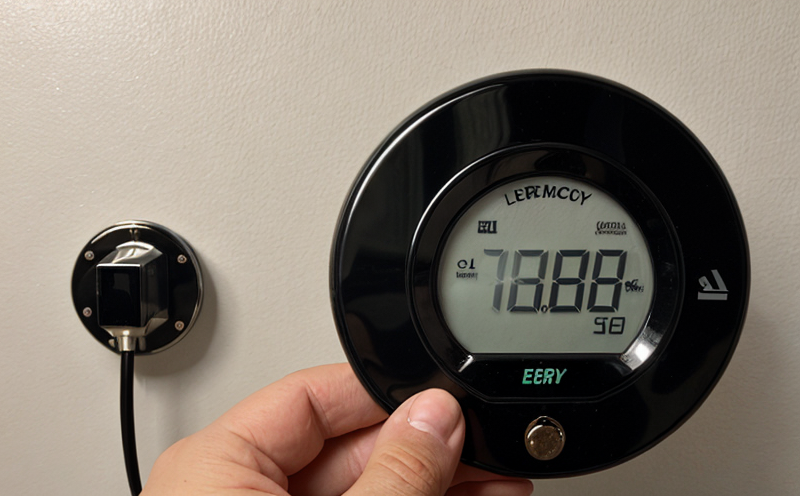ETSI ES 202 336 Energy Efficiency Testing for Network Equipment
The ETSI (European Telecommunications Standards Institute) standard EN 302 336-1, titled "Energy efficiency of telecommunications terminal equipment," provides a framework to ensure that network equipment manufacturers comply with the energy efficiency requirements set by European regulations. This standard is specifically designed for assessing the power consumption and energy efficiency of various types of communication devices, including base stations, routers, switches, and other networking hardware.
The objective of this test method is to evaluate whether a device meets the specified energy efficiency targets as outlined in EC 2013/765/EU, which mandates minimum power consumption levels for certain types of equipment. The standard covers both active (when the device is transmitting or receiving data) and passive (idle mode) states, ensuring that devices operate efficiently under all conditions.
The testing process involves measuring the power consumption during different operational scenarios, including normal usage, standby, and sleep modes. This ensures a comprehensive assessment of the equipment's energy efficiency. The results are compared against predefined thresholds specified in the standard to determine compliance.
For quality managers and R&D engineers, understanding these standards is critical as it helps them optimize product design for better performance while minimizing environmental impact. Compliance with such international regulations also opens up market access opportunities across Europe and beyond.
In summary, ETSI ES 202 336 provides a robust methodology for evaluating the energy efficiency of network equipment. By adhering to this standard, manufacturers can ensure that their products meet stringent environmental protection measures while maintaining high standards of functionality and reliability.
Benefits
The implementation of ETSI ES 202 336 brings numerous advantages to network equipment manufacturers, quality assurance teams, compliance officers, and R&D engineers. These benefits include:
- Enhanced Energy Efficiency: Ensures that products consume minimal power without compromising performance.
- Regulatory Compliance: Helps in meeting EU directives on energy efficiency.
- Market Access: Facilitates easier entry into the European market and potentially other regions adhering to similar regulations.
- Innovation Incentive: Encourages continuous improvement and innovation in product design for better efficiency.
- Cost Reduction: Lower operating costs due to reduced electricity consumption.
- Environmental Impact Minimization: Contributes towards reducing carbon footprints by promoting sustainable practices.
These benefits collectively contribute to the overall competitiveness of a company in the telecommunications industry, making it easier for them to stay ahead of competitors and meet customer expectations regarding eco-friendly products.
International Acceptance and Recognition
The ETSI ES 202 336 standard is widely recognized not only within Europe but also internationally. Its acceptance extends to countries that are part of the European Union as well as those influenced by EU regulations through bilateral agreements or participation in international bodies.
Many other regions have adopted similar standards or incorporate ETSI ES 202 336 into their national legislation, further enhancing its global relevance. For instance, the United States has adopted similar guidelines through the Federal Communications Commission (FCC)'s rules on energy efficiency for certain types of electronic equipment.
Compliance with ETSI ES 202 336 not only ensures compliance with European laws but also demonstrates a commitment to environmental responsibility, which is increasingly becoming an important factor in the global market. This standard plays a crucial role in fostering international collaboration and standardization efforts aimed at promoting sustainable development.
Use Cases and Application Examples
| Use Case/Application Example | Description |
|---|---|
| Base Station Testing | Evaluating the energy efficiency of base stations under various operational conditions. |
| Routine Compliance Checks | Conducting periodic tests to ensure ongoing compliance with ETSI ES 202 336 standards. |
| New Product Introduction | Testing new product designs before their commercial release to verify energy efficiency levels. |
| Supplier Audits | Evaluating the energy efficiency of products supplied by third-party manufacturers or suppliers. |
| Research and Development Projects | Supporting R&D initiatives aimed at improving the energy efficiency of network equipment. |
| Compliance Verification for Certification Bodies | Verifying compliance during certification processes to ensure adherence to ETSI ES 202 336 standards. |
| Customer Satisfaction and Brand Reputation | Maintaining high levels of energy efficiency contributes positively to customer satisfaction and enhances brand reputation. |
The above use cases illustrate how ETSI ES 202 336 is applied in real-world scenarios, emphasizing its versatility across different stages of product lifecycle management. By adhering to these standards, organizations can ensure that their products meet the highest level of energy efficiency requirements.





